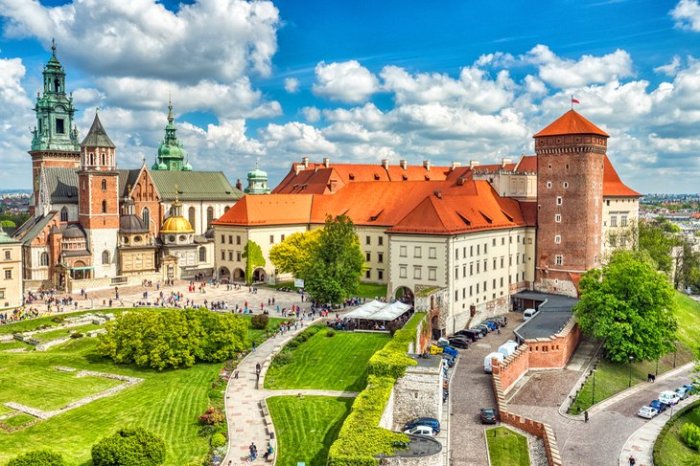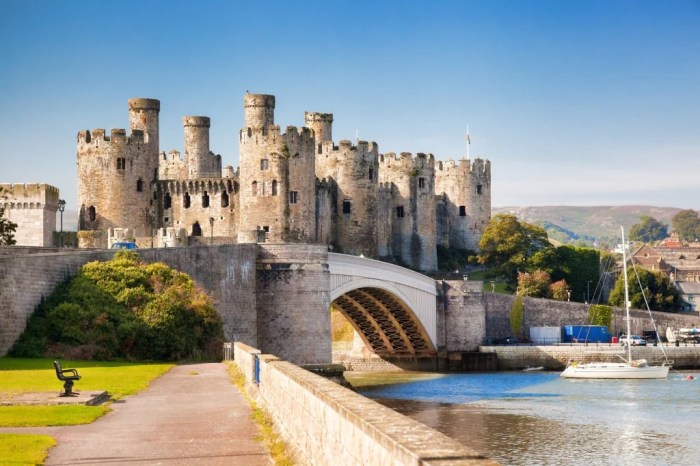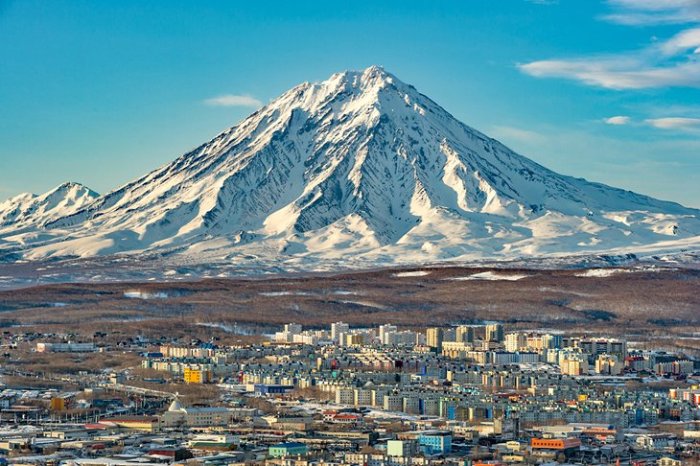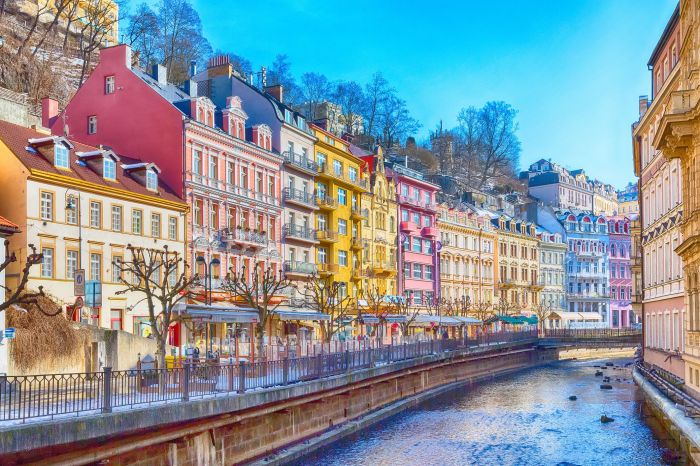Top 10 Places To Visit In Slovakia
Top 10 Places To Visit In Slovakia: A Journey Through History and Nature – Slovakia, a landlocked country nestled in the heart of Europe, offers a captivating blend of history, culture, and natural beauty. From the majestic High Tatras mountains to the charming medieval towns, Slovakia is a hidden gem waiting to be discovered.
Whether you’re an adventure enthusiast seeking thrilling hikes or a history buff eager to explore ancient castles, Slovakia has something for everyone.
With its rich cultural heritage, breathtaking landscapes, and welcoming people, Slovakia is an ideal destination for travelers seeking a unique and memorable experience. This guide will take you on a journey through the top 10 places to visit in Slovakia, highlighting the best attractions, activities, and hidden gems.
Get ready to immerse yourself in the beauty and wonder of this enchanting country.
Introduction
Slovakia, nestled in the heart of Central Europe, is a captivating country brimming with natural beauty, rich history, and diverse cultural experiences. Bordered by Poland, Czech Republic, Austria, Hungary, and Ukraine, Slovakia offers a unique blend of Eastern European charm and Western European sophistication.
Its strategic location has played a pivotal role in shaping its history, making it a fascinating tapestry of influences.Slovakia’s allure for tourists lies in its diverse offerings. From the towering peaks of the High Tatras, a mountain range renowned for its stunning scenery, to the picturesque towns and villages scattered across the countryside, Slovakia offers something for everyone.
Its rich history, marked by empires, revolutions, and cultural transformations, is evident in its medieval castles, historic cities, and vibrant folk traditions. Whether you’re seeking an adventure in the mountains, a cultural immersion in its cities, or a tranquil escape in its charming villages, Slovakia has a captivating experience waiting to be discovered.
Bratislava
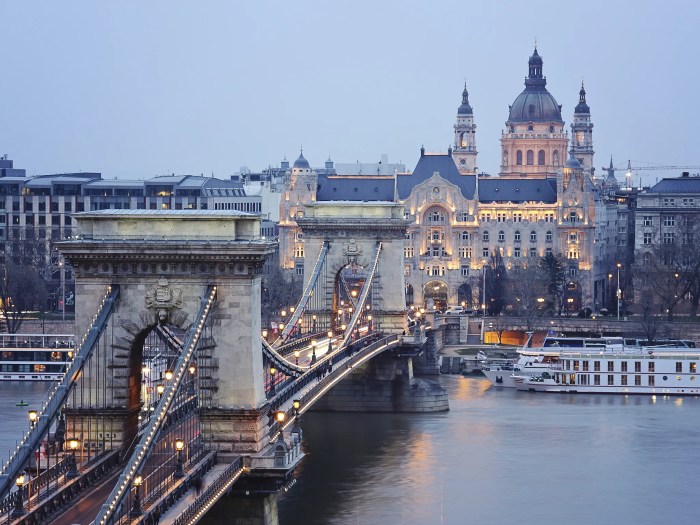
Bratislava, Slovakia’s charming capital, is a city where history and modernity intertwine. With its captivating architecture, vibrant cultural scene, and rich history, Bratislava offers an unforgettable experience for travelers.
Key Attractions
Bratislava boasts an array of historical landmarks that showcase its fascinating past. These sites provide a glimpse into the city’s rich cultural heritage.
- Bratislava Castle: Dominating the city skyline, Bratislava Castle is a majestic fortress that has served as a royal residence, a military stronghold, and now, a museum complex. Visitors can explore the castle’s historical rooms, admire the panoramic views from the castle courtyard, and delve into the city’s history through exhibits.
- St. Martin’s Cathedral: This beautiful Gothic cathedral, located in the heart of the Old Town, is a significant religious landmark and a symbol of Bratislava’s rich history. It’s known for its impressive architecture and its association with the coronation of Hungarian kings.
- Old Town: The Old Town, a UNESCO World Heritage Site, is a charming labyrinth of narrow cobblestone streets, colorful buildings, and historic squares. The main square, Hlavné námestie, is a vibrant hub for street performers, cafes, and restaurants.
Cultural Scene
Bratislava is a city brimming with artistic energy. Its museums, theaters, and music venues offer a diverse range of cultural experiences.
- Slovak National Theatre: This renowned theater is a hub for opera, ballet, and drama performances. It’s a testament to Slovakia’s rich artistic tradition and offers visitors a chance to experience world-class performances.
- Slovak National Gallery: Housing a vast collection of Slovak art from the Middle Ages to the present day, the Slovak National Gallery provides a comprehensive overview of the country’s artistic heritage.
- Bratislava Music Festival: This annual festival brings together renowned musicians from around the world, showcasing a diverse range of genres, from classical to jazz.
Activities
Bratislava offers a range of activities to suit every traveler’s interests.
- Danube River Boat Tour: Take a relaxing boat tour on the Danube River and enjoy stunning views of the city’s skyline, including Bratislava Castle.
- Explore the Old Town: Wander through the charming Old Town, soak up the atmosphere, and discover hidden gems like the Michael’s Gate, a preserved medieval gate.
- Visit the Slovak National Theatre: Catch a performance at the Slovak National Theatre and immerse yourself in Slovakia’s artistic culture.
High Tatras National Park
The High Tatras, a mountain range in northern Slovakia, are a sight to behold. This UNESCO Biosphere Reserve is a paradise for nature lovers, offering breathtaking scenery, diverse flora and fauna, and endless opportunities for adventure. From hiking to skiing, the High Tatras offer something for everyone, making it a popular destination for outdoor enthusiasts.
Hiking Trails in the High Tatras
The High Tatras boast a network of hiking trails suitable for all skill levels. Whether you’re a seasoned hiker or a casual walker, you’ll find a trail that suits your needs.
- Easy trails:For beginners, there are several easy trails that wind through forests and meadows, offering stunning views of the surrounding mountains. The Green Trailin the Tatranská Lomnica area is a great option, offering panoramic views of the High Tatras.
- Moderate trails:For those looking for a more challenging hike, there are several moderate trails that ascend to higher elevations. The Yellow Trailto the top of Sliezsky Domoffers stunning views of the surrounding peaks.
- Difficult trails:Experienced hikers can tackle the challenging trails that lead to the highest peaks in the High Tatras. The Red Trailto the summit of Gerlachovský štít, the highest peak in Slovakia, is a popular choice for seasoned mountaineers.
Winter Activities in the High Tatras
During the winter months, the High Tatras transform into a winter wonderland, offering a variety of activities for those who love the snow.
- Skiing:The High Tatras are home to several world-class ski resorts, including Tatranská Lomnica, Štrbské Pleso, and Jasná. These resorts offer a wide range of slopes, from beginner-friendly runs to challenging black diamonds.
- Snowboarding:Snowboarding is another popular winter activity in the High Tatras. The resorts offer dedicated snowboard parks with jumps, rails, and halfpipes.
- Cross-country skiing:For those who prefer a more leisurely pace, there are several cross-country ski trails in the High Tatras. The trails wind through forests and meadows, offering stunning views of the snow-covered mountains.
- Ice climbing:Experienced climbers can test their skills on the icefalls and frozen waterfalls in the High Tatras. This is a challenging but rewarding activity that requires specialized equipment and experience.
The Spiš Region
The Spiš region in eastern Slovakia is a treasure trove of history and culture, boasting medieval castles, fortified towns, and a rich tradition of folk art. This region is a testament to the country’s rich past, and a journey through its towns and villages is like stepping back in time.
Spiš Region’s History and Culture
The Spiš region’s history dates back to the Middle Ages, when it was a vital part of the Kingdom of Hungary. The region’s strategic location, along the trade routes between Poland and Hungary, led to its prosperity and development. The region’s history is closely intertwined with the development of its unique cultural heritage, which is characterized by its traditional folk art, architecture, and cuisine.
Slovakia is pretty cool, especially if you’re into mountains and castles. But if you’re feeling a bit more French, you might want to check out the Top 10 Places To Visit in Normandy. They have some pretty epic beaches and historical sites.
But if you’re all about the mountains, Slovakia’s definitely the place to be.
UNESCO World Heritage Sites
The Spiš region is home to several UNESCO World Heritage Sites, showcasing its historical significance and cultural richness. These sites include:
Spiš Castle
Spiš Castle is one of the largest castle complexes in Central Europe. This massive fortress, perched on a hilltop, stands as a testament to the region’s medieval past. Visitors can explore the castle’s various towers, courtyards, and halls, each telling a story of its long and fascinating history.
The castle offers stunning views of the surrounding countryside, providing a glimpse into the region’s beauty.
Spišská Nová Ves
Spišská Nová Ves, a charming medieval town, is known for its well-preserved historical center. Its main square, lined with colorful Renaissance and Baroque buildings, is a delight to explore. The town’s Gothic church, with its impressive tower, is a testament to its rich architectural heritage.
Spišská Kapitula
Spišská Kapitula, a Romanesque cathedral complex, is a significant religious and cultural center. The cathedral, with its imposing towers and intricate carvings, is a masterpiece of medieval architecture. Visitors can admire the cathedral’s stunning interior, adorned with frescoes and sculptures.
Visiting the Spiš Region
To fully appreciate the Spiš region’s rich history and culture, visitors can embark on a journey through its UNESCO World Heritage Sites.
Exploring the Sites
When visiting the Spiš region, it’s recommended to dedicate a few days to explore its treasures. Spiš Castle is best visited on a guided tour, allowing visitors to delve into its history and learn about its various functions throughout the centuries.
Spišská Nová Ves offers a delightful stroll through its historic center, with opportunities to sample local delicacies and experience the town’s unique atmosphere. Spišská Kapitula can be visited on a guided tour, providing insights into its religious significance and architectural marvels.
Getting Around
The Spiš region is easily accessible by car, allowing visitors to explore its various towns and villages at their own pace. Public transportation is also available, with buses connecting the major towns and cities.
What to Expect
Visitors to the Spiš region can expect to be captivated by its historical charm, cultural richness, and stunning natural beauty. The region offers a unique blend of medieval architecture, traditional folk art, and picturesque landscapes.
The Low Tatras
Escape the hustle and bustle of city life and immerse yourself in the tranquility of the Low Tatras. This mountain range, often referred to as the “Gentle Giant,” offers a serene escape, where lush forests, sparkling lakes, and picturesque landscapes create a breathtaking panorama.
The Low Tatras are a perfect destination for nature lovers seeking a peaceful retreat.
Activities in the Low Tatras
The Low Tatras are a paradise for outdoor enthusiasts. A network of hiking trails, ranging from easy strolls to challenging climbs, wind through the mountains, leading you to stunning viewpoints, cascading waterfalls, and hidden meadows. For those who prefer a gentler pace, cycling trails offer a leisurely way to explore the region, passing through charming villages and enjoying the fresh mountain air.
The region’s pristine lakes are a haven for anglers, where you can cast a line and enjoy the serenity of nature. The Low Tatras are also home to numerous caves, each with its own unique beauty and history. Explore the depths of the Demänovská Ice Cave, a natural wonder with stunning ice formations, or venture into the Bystrianska Cave, known for its rich archaeological findings.
The Slovak Paradise: Top 10 Places To Visit In Slovakia
The Slovak Paradise, a breathtaking region in eastern Slovakia, is a haven for outdoor enthusiasts seeking adventure. Known for its dramatic canyons, cascading waterfalls, and towering limestone cliffs, this unique landscape offers an unparalleled hiking experience.
Hiking in the Slovak Paradise
The Slovak Paradise boasts a network of trails catering to various skill levels, from leisurely strolls to challenging climbs. The most iconic feature of the region is its “via ferratas,” protected climbing routes equipped with ladders, cables, and bridges. These routes allow hikers to conquer challenging terrain while enjoying the stunning views.
The region offers an array of trails, each presenting a unique challenge and reward. The most famous is the “Slovak Paradise Trail,” a 35-kilometer (22-mile) loop that takes you through the heart of the region, showcasing its most iconic features.
For those seeking a less strenuous hike, the “Kláštorisko” trail offers a gentle climb to a charming medieval monastery. For the adventurous, the “Prielom Hornádu” canyon offers a challenging via ferrata experience, with breathtaking views of the Hornád River and its surrounding cliffs.
This route requires a certain level of fitness and climbing experience. Here are some specific recommendations based on skill level and interests:
- Beginner:The “Kláštorisko” trail offers a gentle climb to a charming medieval monastery, with stunning views of the surrounding valley.
- Intermediate:The “Slovak Paradise Trail” is a challenging but rewarding loop that showcases the region’s best features.
- Advanced:The “Prielom Hornádu” canyon via ferrata offers a thrilling experience for experienced climbers, with breathtaking views of the Hornád River and its surrounding cliffs.
Bardejov: A Well-Preserved Medieval Town
Step back in time and explore the charming town of Bardejov, a UNESCO World Heritage Site that boasts a beautifully preserved medieval center. Its cobblestone streets, fortified walls, and historic buildings transport visitors to a bygone era.
The Historical Significance of Bardejov
Bardejov’s rich history dates back to the 13th century, when it was founded as a royal free town. Its strategic location on the trade route between Poland and Hungary made it a thriving commercial center during the Middle Ages. Bardejov’s importance in medieval trade is reflected in its well-preserved architecture, including the town square, the fortified walls, and the numerous churches.
Activities in Bardejov
- Explore the Town Center:Stroll through the charming streets of Bardejov’s historic center, marveling at the well-preserved medieval architecture. Admire the colorful houses, the town square, and the fortified walls that once protected the town.
- Visit the St. Egidius Church:This 15th-century Gothic church is a must-see attraction in Bardejov. Its impressive interior features beautiful stained glass windows, a magnificent altar, and a unique collection of medieval art.
- Enjoy a Traditional Slovak Meal:Indulge in the flavors of Slovak cuisine at one of the many restaurants in Bardejov. Try traditional dishes like bryndzové halušky (potato dumplings with sheep cheese), kapustnica (sauerkraut soup), or pirohy (dumplings filled with various fillings).
The Orava Region
The Orava region, nestled in northern Slovakia, is a treasure trove of traditional culture and stunning natural beauty. This region is known for its vibrant folk traditions, picturesque landscapes, and historical sites.
Cultural Heritage of the Orava Region, Top 10 Places To Visit In Slovakia
The Orava region is a living museum of Slovak folk culture. The region’s cultural heritage is deeply rooted in its traditions, which are evident in the region’s folk costumes, wooden churches, and folk music.
Traditional Folk Costumes
The Orava region is famous for its colorful and elaborate traditional folk costumes. These costumes, known as “kroje,” are a testament to the region’s rich history and cultural identity. The women’s costumes are particularly striking, featuring intricate embroidery, colorful fabrics, and elaborate headwear.
The men’s costumes are simpler but equally distinctive, often featuring embroidered vests and hats.
Wooden Churches
The Orava region is also home to a number of beautiful wooden churches. These churches, built in the 17th and 18th centuries, are a unique architectural style that reflects the region’s craftsmanship and artistic traditions. Many of these churches are still in use today, and they are a testament to the enduring faith of the Orava people.
Folk Music
Folk music is an integral part of the Orava region’s cultural heritage. The region’s traditional folk music is characterized by its lively melodies, intricate rhythms, and use of traditional instruments. Folk music is often performed at festivals and celebrations, and it is a source of pride for the Orava people.
Natural Beauty of the Orava Region
The Orava region is blessed with breathtaking natural beauty. The region is home to picturesque lakes, dense forests, and towering mountains.
Orava Lake
Orava Lake, also known as Oravská Priehrada, is the largest artificial lake in Slovakia. The lake is surrounded by rolling hills and forests, and it is a popular destination for swimming, boating, and fishing.
Orava Castle
Orava Castle is a majestic medieval castle that sits perched on a hill overlooking Orava Lake. The castle is one of the most popular tourist attractions in Slovakia, and it offers visitors a glimpse into the region’s rich history.
Slovak Paradise
The Slovak Paradise, a national park located in the Orava region, is known for its rugged mountains, deep canyons, and cascading waterfalls. The park is a paradise for hikers and outdoor enthusiasts.
Slovakia’s got some pretty cool places to check out, like the High Tatras mountains and the historic city of Bratislava. But if you’re looking for something a little more adventurous, maybe check out the Top 10 Places To Visit in New Zealand.
After that, you can head back to Slovakia and hit up the Spiš Castle, one of the largest castle complexes in Central Europe.
Activities in the Orava Region
The Orava region offers a wide range of activities for visitors. Here are a few suggestions:
Visit Orava Castle
A visit to Orava Castle is a must for any visitor to the Orava region. The castle is a stunning example of medieval architecture, and it offers visitors a glimpse into the region’s rich history.
Explore Orava Lake
Orava Lake is a great place to relax and enjoy the natural beauty of the Orava region. Visitors can go swimming, boating, fishing, or simply enjoy a scenic walk along the lake’s shores.
Attend a Traditional Folk Festival
The Orava region is known for its vibrant folk traditions, and there are a number of traditional folk festivals held throughout the year. These festivals offer visitors a chance to experience the region’s unique culture firsthand.
Slovakia’s got some pretty cool stuff to see, like the High Tatras mountains and the historic city of Bratislava. But if you’re looking for a totally different vibe, you might want to check out Top 10 Places To Visit in Brazil for some serious beach time and jungle adventures.
Then, after all that, you can come back to Slovakia and explore its charming villages and castles.
The Trenčín Region
The Trenčín Region, located in western Slovakia, boasts a rich history and a captivating landscape. Its strategic location along the Váh River has made it a crossroads of cultures and a battleground for centuries.
The Trenčín Region’s History
The region has been inhabited since prehistoric times, with evidence of Celtic and Roman settlements. During the Roman Empire, the region was part of the Roman province of Pannonia, and the city of Trenčín was an important military outpost known as Laugaricio.
The region played a crucial role in the development of the Great Moravian Empire, a powerful Slavic state that emerged in the 9th century. During the Middle Ages, the region was part of the Kingdom of Hungary and was a key center of trade and commerce.
Castles in the Trenčín Region
The Trenčín region is home to several impressive castles, each with its own unique history and charm. Here are a few of the most notable:
Trenčín Castle
Trenčín Castle, perched atop a steep rock overlooking the Váh River, is one of the oldest and most important castles in Slovakia. The castle’s history dates back to the 4th century when it was a Roman fort. Over the centuries, it was expanded and rebuilt, and it served as a royal residence, a military stronghold, and a prison.
Today, the castle is a popular tourist destination, offering visitors a glimpse into Slovakia’s rich past.
Beckov Castle
Beckov Castle, located in the Strážovské vrchy Mountains, is a picturesque medieval castle known for its dramatic setting and its well-preserved ruins. The castle was built in the 13th century and played a significant role in the defense of the region against Ottoman invaders.
Oravský Podzámok Castle
Oravský Podzámok Castle, located in the Orava region, is a stunning Renaissance castle with a dramatic setting on a rocky cliff overlooking the Oravská priehrada (Oravská Reservoir). The castle was built in the 13th century and was a center of power for the Oravská County.
Visiting the Castles
These castles offer a variety of attractions and experiences for visitors. Here are some tips for planning your visit:
- Trenčín Castle: The castle is open year-round, and guided tours are available in English. Visitors can explore the castle’s many towers, courtyards, and museums, including the Museum of Arms and the Museum of History. The castle also hosts various events throughout the year, including concerts and theatrical performances.
- Beckov Castle: The castle is open from April to October. Visitors can explore the castle’s ruins, which include the main tower, the chapel, and the courtyard. The castle also offers breathtaking views of the surrounding countryside.
- Oravský Podzámok Castle: The castle is open year-round, and guided tours are available in English. Visitors can explore the castle’s opulent interiors, including the Great Hall, the Chapel, and the Library. The castle also houses a museum dedicated to the history of the Oravská region.
The East Slovakian Lowland

The East Slovakian Lowland, a sun-drenched expanse in eastern Slovakia, is renowned for its fertile plains and a rich cultural heritage. This region is a vital agricultural area, with vineyards stretching as far as the eye can see, making it one of Slovakia’s most important wine-producing regions.
Wine Production
The East Slovakian Lowland is a significant wine-producing region, boasting a long and storied tradition of viticulture. The region’s climate, characterized by warm summers and moderate rainfall, provides ideal conditions for grape cultivation. The soil, primarily a mixture of loess and clay, is rich in nutrients, contributing to the quality of the grapes.
The region is particularly known for its production of white wines, with varieties like Veltlínske zelené, Furmint, and Rizling vlašskýbeing popular choices. These grapes thrive in the warm climate and produce wines with distinct aromas and flavors. While white wines dominate the production, red wines are also produced, with Frankovkaand Modrý Portugalbeing notable varieties.The local wine culture is vibrant and deeply rooted in the region’s history.
Many wineries offer tours and tastings, allowing visitors to experience the passion and expertise of the local winemakers.
Cultural Attractions
The East Slovakian Lowland is not just about wine; it’s also a region steeped in history and culture. The region’s cultural attractions are as diverse as its landscape, offering something for everyone.
Košice
Košice, the largest city in eastern Slovakia, is a cultural hub and a must-visit destination. The city boasts a rich history, evident in its well-preserved medieval architecture, including the St. Elizabeth Cathedral, a stunning Gothic masterpiece. Košice is also home to numerous museums, art galleries, and theaters, showcasing the region’s artistic heritage.
Prešov Region
The Prešov region, a part of the East Slovakian Lowland, is known for its picturesque towns and villages, each with its own unique character. The region is also home to several historical landmarks, including the Bardejov Town Hall, a magnificent Renaissance building, and the Spišská Nová Ves, a charming town with a rich history.
Activities
The East Slovakian Lowland offers a wide range of activities for visitors to enjoy.
Wine Tours
Embark on a wine tour and explore the region’s vineyards, visiting wineries to sample the local wines and learn about the winemaking process. Many wineries offer tours and tastings, providing an immersive experience of the local wine culture.
Exploring Košice
Spend time exploring the historic streets of Košice, admiring the city’s architecture and visiting its museums and art galleries.
Cultural Events
Attend a cultural event, such as a concert, a theater performance, or a traditional folk festival, to experience the region’s vibrant cultural scene.
Epilogue
From the majestic peaks of the High Tatras to the charming cobblestone streets of Bratislava, Slovakia offers a truly unforgettable travel experience. Whether you’re seeking adventure, relaxation, or cultural immersion, this diverse country has something for everyone. So, pack your bags, grab your hiking boots, and prepare to be amazed by the hidden treasures of Slovakia.
FAQ Summary
What is the best time to visit Slovakia?
The best time to visit Slovakia depends on your interests. Spring and autumn offer mild weather and vibrant colors, while summer is ideal for hiking and outdoor activities. Winter brings snow and opportunities for skiing and snowboarding.
What is the currency in Slovakia?
The official currency in Slovakia is the Euro (EUR).
Do I need a visa to visit Slovakia?
Visa requirements depend on your nationality. Check with the Slovak embassy or consulate in your country for the latest information.
Is it safe to travel to Slovakia?
Slovakia is generally a safe country for tourists. As with any travel destination, it’s always wise to exercise caution and be aware of your surroundings.


